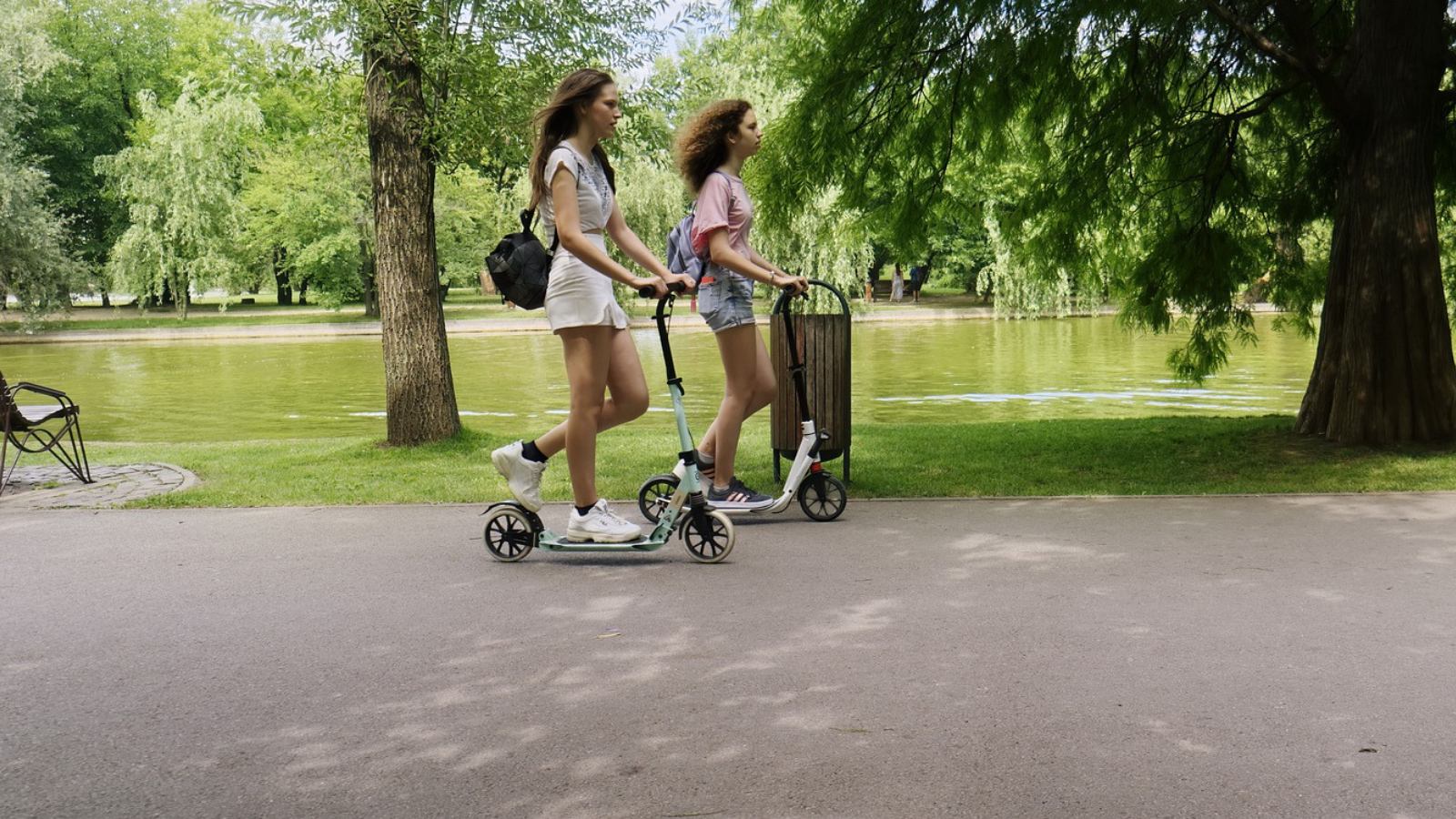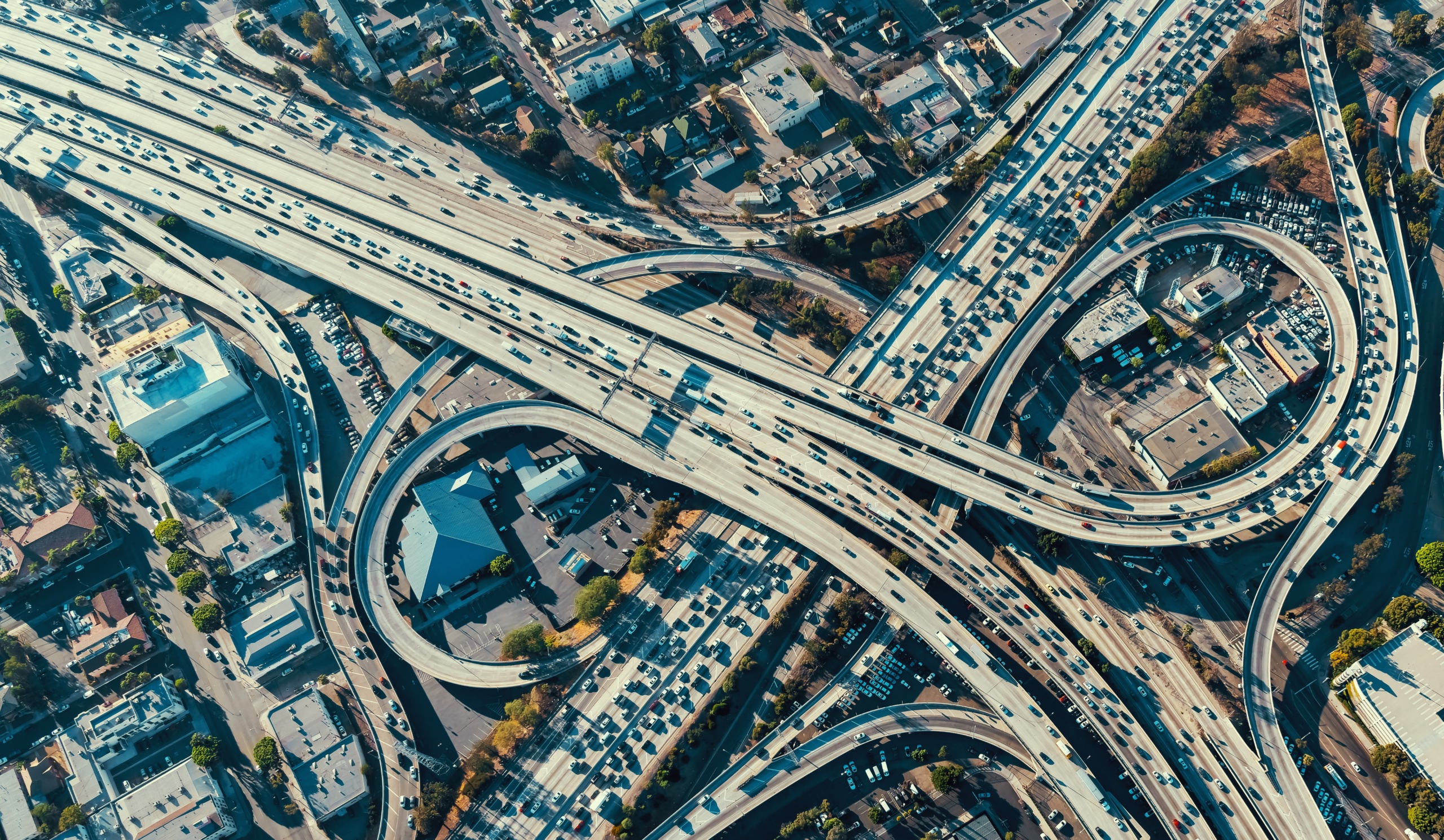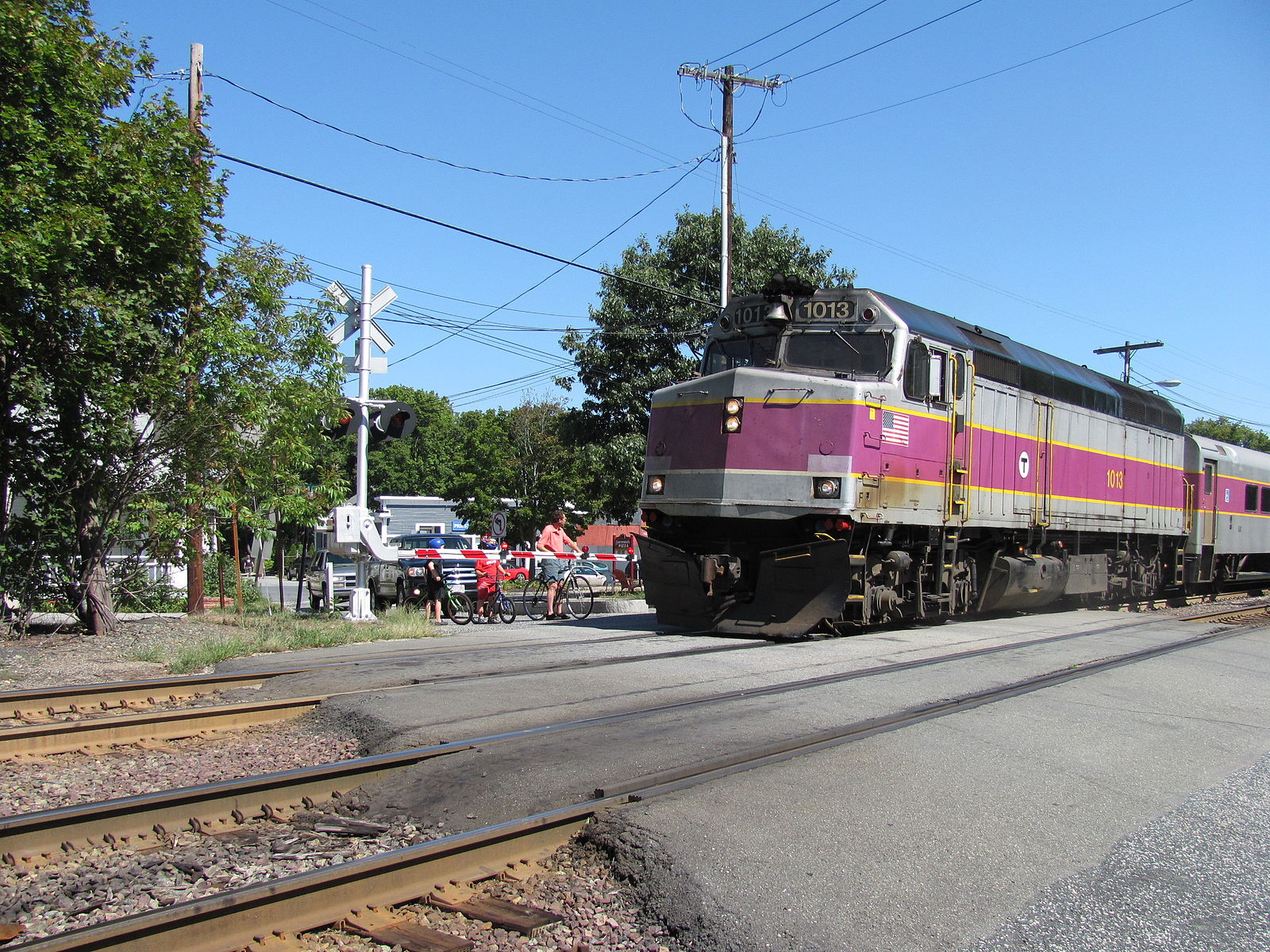True confessions of an e-scooter lover
Support e-scooters by adding bike lanes and docking stations to make our cities safer.

I was an undergraduate student in Washington, D.C. when the great electric scooter boom began in spring 2018. The curious, colorful and battery-powered “e-scooters,” branded with catchy names like “Lime,” “Bird” and “Skip,” started as a novelty about four years ago but quickly became a key part of the city’s transportation network. After downloading an app and linking a payment method, riders could (and still can) pick parked e-scooters right off the sidewalk and ride across town at 10 to 15 miles per hour.
Relatively cheap and easily accessible, e-scooter sharing services address a critical gap in transportation options for a car-free student living in a hilly neighborhood without a metro stop. E-scooters carried me up steep hills on my way back from work or to new neighborhoods to try Ethiopian food, and were cheaper and quicker for short distances than ride-hailing services like Uber and Lyft. I never needed to worry about theft because the electric scooter wasn’t mine, and the electric motor meant I did not have to pedal uphill; these were factors that had dissuaded me from purchasing a bicycle.
E-scooters are fun and practical, but that’s not the whole story. By replacing many car trips, they have the potential to make cities cleaner, safer, and less congested. E-scooters take up a tiny fraction of the space required for cars, both when driving and when parked. E-scooters don’t directly burn fossil fuels, which means they don’t emit toxic air pollution or contribute to the climate crisis to the same degree as gas-powered vehicles do. They’re much quieter than cars and trucks and they pose much less risk to pedestrians because they are lightweight and travel at relatively low speeds.
In the United States’ most congested cities, e-scooters, bikes and other active transportation options could replace a lot of car trips. Forty-eight percent of car trips are less than three miles and about 20 percent are less than one mile. Less car dependence would free up road space, reduce vehicle deaths and make our cities cleaner and quieter. Instead of honking and gas fumes in our neighborhoods, we’d have gentle electric whirring and fresh air. Parents could breathe easier when their kids cross the street.
Are e-scooters dangerous?
By now, scooter-sharing services, together with public transit and bicycles, offer clear potential to improve urban transportation. Yet, instead of seeking to scale up e-scooters, many cities have imposed strict restrictions that have even forced scooter-sharing companies to cut services.
Some critics have called e-scooters a “growing public health challenge,” noting a rise in scooter-related injuries as the devices become more popular. These concerns are valid and changes need to be made to improve safety for e-scooter riders and pedestrians.
However, viewing a tiny electric device whose speed is capped at 15 miles per hour or less as uniquely dangerous doesn’t make a whole lot of sense. Critics often single out recently deployed e-scooters as unsafe, while failing to consider the greater danger posed by automobiles because they have been around for generations and we’ve become used to car traffic.
E-scooters are smaller and slower than even bicycles, so there are much less serious consequences in an e-scooter crash than a high-speed car or motorcycle crash. In fact, car crashes are the leading cause of death for Americans between the ages of one and 54, killing approximately 38,000 Americans every year. Unlike e-scooters, vehicles powered by fossil fuels also choke our cities with toxic pollution. An estimated 58,000 Americans are killed every year by air pollution from road transportation emissions alone. That means almost 100,000 people die every year as a result of our car-dependent culture.
Cars are also a major source of climate pollution, representing a massive risk to a healthy future and a livable climate. In 2018, the transportation sector accounted for 28 percent of greenhouse gas emissions in the United States, meaning that fossil-fuel powered automobiles are among the largest contributors to worsening climate change. In contrast, e-scooters do not directly emit pollution or greenhouse gases.
Sidewalk, street and parking dilemmas
Right now, e-scooters can feel disruptive because, in large part, our cities are exclusively designed for automobiles. Many roads in American cities are not well-suited for electric scooters (or bikes, for that matter); without bike lanes, scooter-riders are stuck between a rock and a hard place.
Sharing narrow sidewalk space with e-scooters can be annoying for pedestrians; no one wants to have their peaceful stroll disturbed by an electric scooter trying to weave past them. It’s also frustrating for riders to get stuck behind slow walkers and poorly maintained sidewalks can easily cause a crash.
Some cities have responded to pedestrian complaints by banning e-scooters from riding on sidewalks. But forcing e-scooters to share roads with larger, faster automobiles isn’t a good alternative; as I have experienced, riding directly alongside cars is nerve-wracking and dangerous. Moreover, drivers don’t want to be stuck behind an e-scooter rolling along at 12 miles per hour on a narrow road.
Finally, there’s the issue of parking. Scooter-sharing services allow users to simply park e-scooters anywhere outside of specifically prohibited areas, and rely on users to avoid blocking sidewalks or roads. But riders aren’t always considerate of neighborhood residents, and inappropriately-parked e-scooters can be a nuisance for pedestrians, drivers and property owners.
Even for riders themselves, this system can be frustrating. Sure, it’s nice to be able to park an e-scooter anywhere you want (for example, in front of your own home), but the downside is a lack of reliable pick-up locations and a lot of uncharged e-scooters. Many times, I was running late for class and wanted to grab an e-scooter on the way — but the only nearby devices were out of battery or parked in random, inconvenient locations.
Bike lanes and docking stations to the rescue
Is it possible to effectively integrate e-scooters into our cities? Definitely.
The problems mentioned above are real, but they can be easily fixed by adding more bike lanes and docking stations. With these simple, nonintrusive amenities, e-scooters can free up space from automobiles and reduce traffic congestion and pollution with minimal disruption to drivers, pedestrians and residents. Cities and startups need to work together to add these cheap improvements and integrate e-scooters effectively.
Bike lanes give e-scooter riders a safe space to travel at their own speed without disrupting pedestrians or cars, and is an effective way to reduce crashes and injuries. I know from personal experience that more bike lanes would have protected me from several unsafe situations.
We also need to provide docking stations where e-scooter users can park and pick up their devices. With enough stations, users would be less likely to dump their e-scooters inin annoying places, reducing clutter and addressing critics’ concerns. Furthermore, clustering more scooters in specific locations would improve reliability for users, ensuring convenient and consistent access. Ideally, docking stations would also charge e-scooters so that they are always ready to use, but even simple docking stations without charging could help solve clutter and reliability issues.
Dockless scooter-sharing made dropping off devices more convenient, solving a key constraint of conventional docked bike rental services like Citi Bike. Scooter-sharing services don’t need to adopt 100 percent docked models; instead, we just need more optional docking stations to incentivize proper and consistent parking. More docking stations would improve, not replace, dockless scooter-sharing systems.
These changes don’t require the kind of massive spending and disruption that adding new highways and parking lots does; adding bike lanes can be as simple as painting lines on the ground and rerouting car traffic in certain areas. Docking stations also take up little space compared to gas stations and parking lots, and often don’t even require public investment.
I love riding e-scooters, but you don’t have to. You can keep driving your car, and you will still benefit from one less car cutting you off in traffic or taking your parking spots. Your air will be cleaner and your neighborhood quieter with me on an e-scooter instead of inside a car.
If you’re tired of inhaling exhaust fumes, circling for parking or flinching when motorcycles drive by, give electric scooters and their riders a chance before you say they’re too dangerous. Instead, tell your city government and local scooter-sharing services to add more bike lanes and docking stations.
To make traveling in our cities safer, we shouldn’t ban e-scooters — we should support them.
Topics
Authors
Mac Dressman
Find Out More

A threat to federal climate investment: Highway boondoggles

Important wins for Texas consumers this legislative session

America needs a “roads review”


